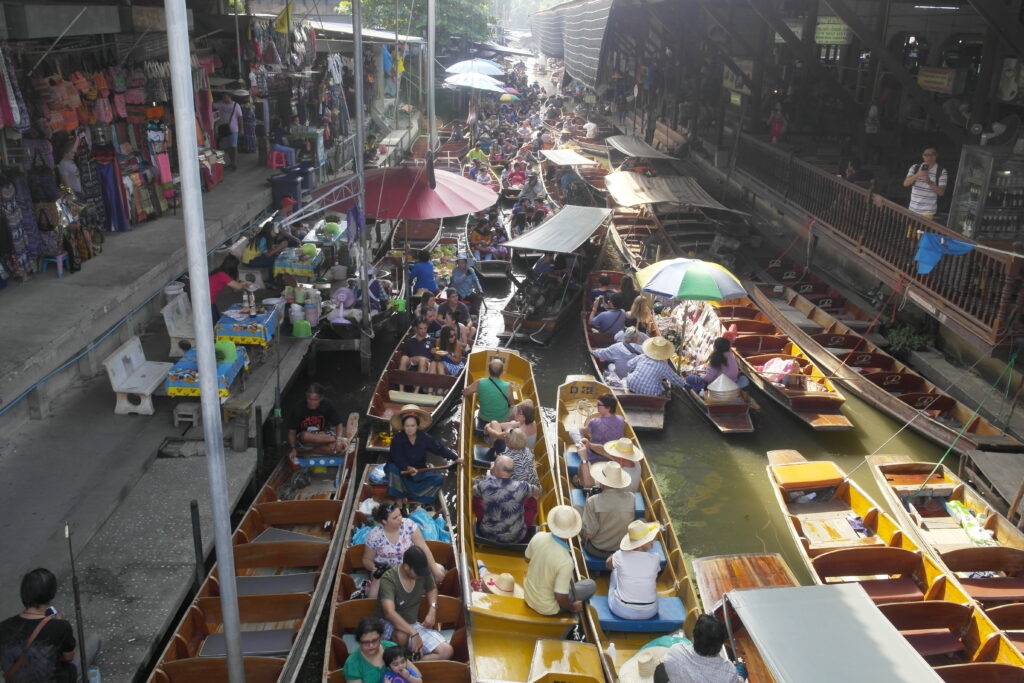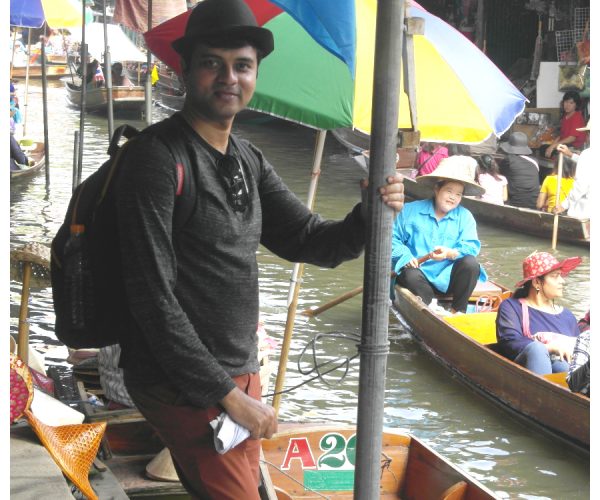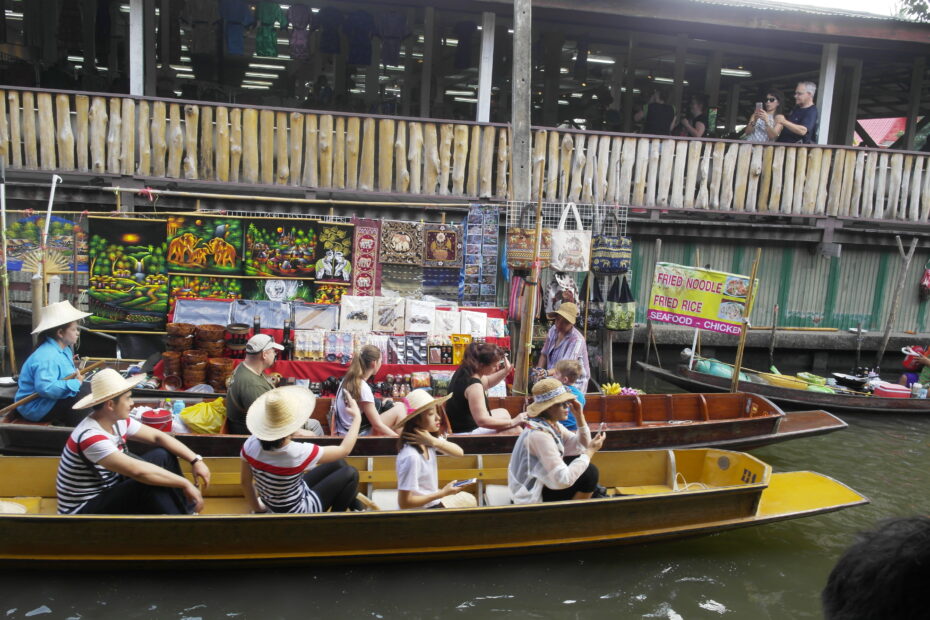With the advent of water transportation, floating markets became prominent in many parts of the world. In countries like Thailand, Vietnam, Cambodia, Myanmar, Indonesia, India, and Italy where canals formed an integral part of the transportation network, the floating markets were quite common. Teeming with boats of all shapes and sizes, these canalside markets were very vibrant and busy shopping areas. However, the rise of motorways and vehicles led to the steep decline of the floating markets. Today, only a handful of such markets exist globally, and these are popular only as tourist attractions. Damnoen Saduak Floating Market in Thailand is perhaps one of the largest and most famous among all the floating markets.
Location and Layout
The Damnoen Saduak Floating Market is in Damnoen Saduak district, Ratchaburi Province about 100 km from Bangkok. It has a labyrinth system of interconnected canals. The floating market gives a glimpse of the trading activities on the water. It also showcases the traditional way of life as well as the skills of the people living along the banks of the canals or klongs as they are known in the Thai language. The Damnoen Saduak Floating Market lies along the Ton Kem Canal, an ancillary stream of the main Damnoen Saduak canal.

History
The floating markets have been prevalent in Thailand since the Ayuthaya period (between the 14th century and the 18th century). In the year 1866, King Mongkut of Thailand, also known as King Rama IV, laid the foundation of a canal to connect the Mae Klong and the Tha Chin rivers. It took around two years to build this canal. After the construction, a lot of local farmers started selling their farm produce like fruits and vegetables along the banks. In due course of time, a floating market was established along the Lad Plee canal. Towards the end of the year 1977, the area around Ton Kem canal became renowned for shopping owning to the development of roads. Visitors from distant areas started thronging the place and it was called as the new market. Many traders also slowly started shifting from the Lad Plee canal area to the Ton Kem canal area. Finally, the Ton Kem canal market was renamed as the Damnoen Saduak Floating Market.
Things To Do
- The Floating Market offers a unique experience to visitors. Tourists can take a boat ride to observe the daily buying and selling activities, catch a glimpse of the traditional way of life of the people living along the banks of the canals and also witness the beauty of the temples located in the vicinity of the floating market.
- The food scene in Damnoen Saduak Floating Market is also popular among tourists. From the sweet treats that melt in the mouth to the finger-licking meat delicacies, from the delicious vegetarian dishes to the piping hot noodle bowls, the Damnoen Saduak Floating Market has it all. Tourists can find the vendors selling amazing varieties of Thai cuisines on their paddle boats.
- Tourists can also explore the market area on foot. They can take a walk along the banks of the canal and watch the activities of the vendors and the purchasers. The market’s bustling landscape gives excellent photo opportunities.
- There are countless shops in the Damnoen Saduak Floating Market that sell souvenirs and other Thai handicraft items. Haggling is quite common, and tourists can purchase a variety of memorabilia at affordable prices.
Important Tips
- The best time to visit the Damnoen Saduak Floating Market is 7 AM. As the day progresses the crowd swells, and it often leads to severe traffic congestion across the canals.

- The items sold in the market are pricey. Hence bargaining is a common practice.
- It usually takes around 1 to 1.5 hours to cover the entire market.
- The Mae Klong Railway Market is near the Damnoen Saduak Floating Market. Hence tourists can plan an itinerary to visit both places on the same day.
- It is advisable to visit the Damnoen Saduak Floating Market with a licensed guide.

For more posts on travel, please visit our Wander Lust section.
